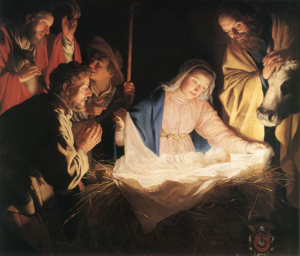In the quote below, Johann Gerhard, speaks of the practical use of the biblical teaching of the “communication of natures” in Christ. Those “natures” are divine and human. This communication is so complete that what is said of the divine can be said of the human. So, for example, Paul can write that the Lord of Glory [God] was crucified (1 Corinthians 2:8). This is accomplished without confusing the substance of the two natures. In other words, it is a miracle beyond our comprehension. The Bible does not present this information so we can develop abstract theories, but for our consolation. That is what Gerhard address below.
 The very mystery of human redemption and the foundation of our salvation depends on the true and real communication of the natures in Christ. Between the assuming Word and the assumed human nature there is a true and real communication, and for that reason the seed of the woman could crush the head of the serpent (Gen. 3:[15]). For that reason, the Son of Man could give His own flesh for the life of the world (John 6:51). For that reason, He could shed His blood for the remission of sins (Matt. 26:28). For that reason, the blood of Christ can cleanse us from our sins (1 John 1:7). On the other hand, if there is no real communication of the natures: The woman’s seed could not have bruised the serpent’s head. The flesh of Christ could not have been given for the life of the world. His blood could not have been shed for the remission of sins. This is because the blood of the human nature that is not God in essence and that does not have a real communion with God cannot be shed for the forgiveness of sins, and the flesh of the human nature that is not God in essence and that does not have a real communion with the divine nature cannot be given for the life of the world, because it lacks that infinite might and efficacy that is required to provide satisfaction to the justice of God.
The very mystery of human redemption and the foundation of our salvation depends on the true and real communication of the natures in Christ. Between the assuming Word and the assumed human nature there is a true and real communication, and for that reason the seed of the woman could crush the head of the serpent (Gen. 3:[15]). For that reason, the Son of Man could give His own flesh for the life of the world (John 6:51). For that reason, He could shed His blood for the remission of sins (Matt. 26:28). For that reason, the blood of Christ can cleanse us from our sins (1 John 1:7). On the other hand, if there is no real communication of the natures: The woman’s seed could not have bruised the serpent’s head. The flesh of Christ could not have been given for the life of the world. His blood could not have been shed for the remission of sins. This is because the blood of the human nature that is not God in essence and that does not have a real communion with God cannot be shed for the forgiveness of sins, and the flesh of the human nature that is not God in essence and that does not have a real communion with the divine nature cannot be given for the life of the world, because it lacks that infinite might and efficacy that is required to provide satisfaction to the justice of God.
Gerhard, Johann Theological Commonplaces: Exegesis IV: On Christ 150-151
